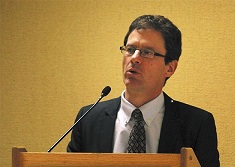
Public Domain Image
(Duluth, St. Louis County, Minnesota: Jan 28, 2017) In 2015, an Indian Child Welfare Court was established in Duluth, headed by Judicial District Judge Sally Tarnowski, to offer a better informed, culturally sensitive approach for Native American families involved with the legal system. Professionals working in the Indian Child Welfare Court are specially trained in ICWA (the Indian Child Welfare Act), the historical context leading up to ICWA and other relevant legal and cultural issues in order to better meet the needs of families, and to better collaborate with tribal communities.
Read more about the court: Indian Child Welfare Court in Duluth aims for better outcomes for Native American families (Duluth News Tribune)
The Indian Child Welfare Court was created in response to ongoing concerns, validated by research, that shows Native children are being placed into state care at high rates – taken from tribal communities and placed into non-Native families. This is significantly harming families and communities. In Minnesota, statistics consistently show, that Native children are placed into state care at earlier ages, have multiple placements, and spend longer amounts of time into foster homes or institutions.
In October 2014, David Glesener a Child Protection Supervisor for St. Louis County Public Health and Human Services reported that,”As of this week, we have 540 children in out of home care, up from less than 500 two years ago. The percentage of those in care that are American Indian has also been rising and is at 40% – up from 30% two years ago. The numbers are similar in counties across Minnesota. The situation is truly epidemic for American Indian families and tribes...” The crisis of Indian children in Minnesota
In another somber report (August 2016) the Star Tribune reported that,“Of the 1,300 Indian children discharged from Minnesota foster care in 2013 and 2014, the most recent years available, only 58 percent were reunited with their parents or primary caregiver, according to a Star Tribune analysis of federal data. That’s the lowest of any racial or ethnic group…” Saving themselves, then their family
The Indian Child Welfare Court is designed to work in the best interest of the child’s well-being and safety while also considering their cultural needs, and utilizing community resources where appropriate.
The result has worked to build closer relationships between all those involved – including tribal governments and authorities, social services and the court system. The court room is also designed so that every sits together at one table, in a square,”In the middle of the tables inside the courtroom sit the Native American medicines sage, tobacco and sweetgrass. Everyone — from the clients to the judge — sits on the same level in a square. ICWA cases can include multiple attorneys and parents, social workers and a guardian ad litem. Before this court, all child protection cases were heard in a smaller, more intimate court. But it meant that people were talking to the backs of heads..” (Duluth News Tribune)
Currently, there is only one Indian Child Welfare Court in existence in Duluth but if this court proves successful, others could be modeled after it. The court operates through a grant issued from a federally funded study.UMD Leads American Indian Child Welfare Act Project
History of Native Children Being Taken from Home, Community
The history of Native children being taken from their homes is long, and complex, and involves actions taken by the U.S. government on Native people, and consequences that resulted within families, and Native communities as a result of these actions. Native communities, and families have been significantly impacted by the destruction of their traditional way of life and along with it, the destruction of community and family ties, and destruction of values and teachings that provided ways to raise and care for children. Poverty also remains a serious issue that is impacting Native families.
Janice LaFloe of the American Indian Family Center (AIFC) says, “For years and years, American Indian people have worked together to protect their community, as decisions were made for them, through the signing of treaties and breaking of promises, through the forced system of tribal governments and the forced assimilation of taking children into mission schools…The forced removal of children to go to boarding schools was the most detrimental thing you could have done to Indian community. There was a whole generation or more of children removed from their homes. The amount of abuse that happened to children in those boarding schools led to a perpetual cycle of learned behavior that surfaced and continues to play out...” American Indian children in Minnesota disproportionately placed in foster care (TC Daily Planet)

(PA) Carlisle Boarding School. Wikipedia Commons.
Out of home placement for Native children can be traced back to boarding schools (1860-1973), which were operated by the U.S. government through the Bureau of Indian Affairs, or by religious missionaries. The purpose of boarding schools was to educate and assimilate Native children into the mainstream “American way of life”, and to shed their Native identity entirely. At boarding schools, Native Children were given a new name, forbidden to speak their Native language, their hair forcibly cut, clothing changed, and they were taught to be ashamed of their identity and encouraged to adopt American practices. Abuse (physical, mental, sexual) and neglect was common place at boarding schools, as was forced labor. Many children died as a result of abuse or disease, resulting from overcrowding or neglect in boarding schools.
Government policies forced Native children into boarding schools – many children were kidnapped or parents were threatened, including use of physical force, to gain compliance. In many areas, racism kept Native children out of public schools so their only choice of education was a boarding school. Or, extreme poverty caused parents to send children into boarding schools. In Minnesota, in 1971-1972, 1/4 of the total population of Native children under the age of 1 years old had been adopted, and 90% were adopted into non-Native homes. According to the Native American Rights Fund (NARF) 2013 Legal Review, 60,000 Native children were enrolled in boarding schools in 1973, when the boarding school era was coming to an end.
Children being taken out of Native homes and placed with non-Native families has created a crisis that threatens the existence of Native people, and the preservation of their culture. The trauma caused by boarding schools is experienced in Native families, and communities to this day. According to experts, and health care professionals, there is a direct relation between the trauma and destruction of family ties caused by boarding schools and the high rates of depression, post-traumatic stress disorder (PTSD), drug and alcohol abuse and suicide among boarding school survivors and their families. In addition, survivors of boarding schools were instilled with shame, and taught to believe they are at fault or to blame for the abuse inflicted on them. There was no help, support or resources offered to cope with what happened, or to address the harms inflicted. Another disastrous effect was that the passing down of Native teachings, languages and customs was interrupted, and in many cases not passed down – and children were taught to be ashamed of their identity, and encouraged to separate from family and community.
In 1978, the Indian Child Welfare Act (ICWA) was established out of a response to rising concerns about the well-being of Native children who were being taken, at high rates, from their homes by public and private institutions and placed into non-Native families. Cultural genocide remains a very real concern for many Native communities, as does the fate of their children – many who have never returned. The intent of Congress under ICWA was to “protect the best interests of Indian children and to promote the stability and security of Indian tribes and families” (25 U.S.C. § 1902). ICWA applies when there is an Indian child involved in child custody proceedings including foster care placements, CPS and family court proceedings. The goals of ICWA are to strengthen Native families, protect tribal interests and keep decisions within Native communities. Minnesota has added an additional layer of protection for children under the Minnesota Indian Family Preservation Act (MIFPA), passed in 1987.
For More Information:
ICWA – Historical Context, Information & Application: Powerpoint Presentation by Evie Campbell, MSW (UMD)
The sad legacy of American Indian boarding schools in Minnesota and the U.S. (Minn Post)
















